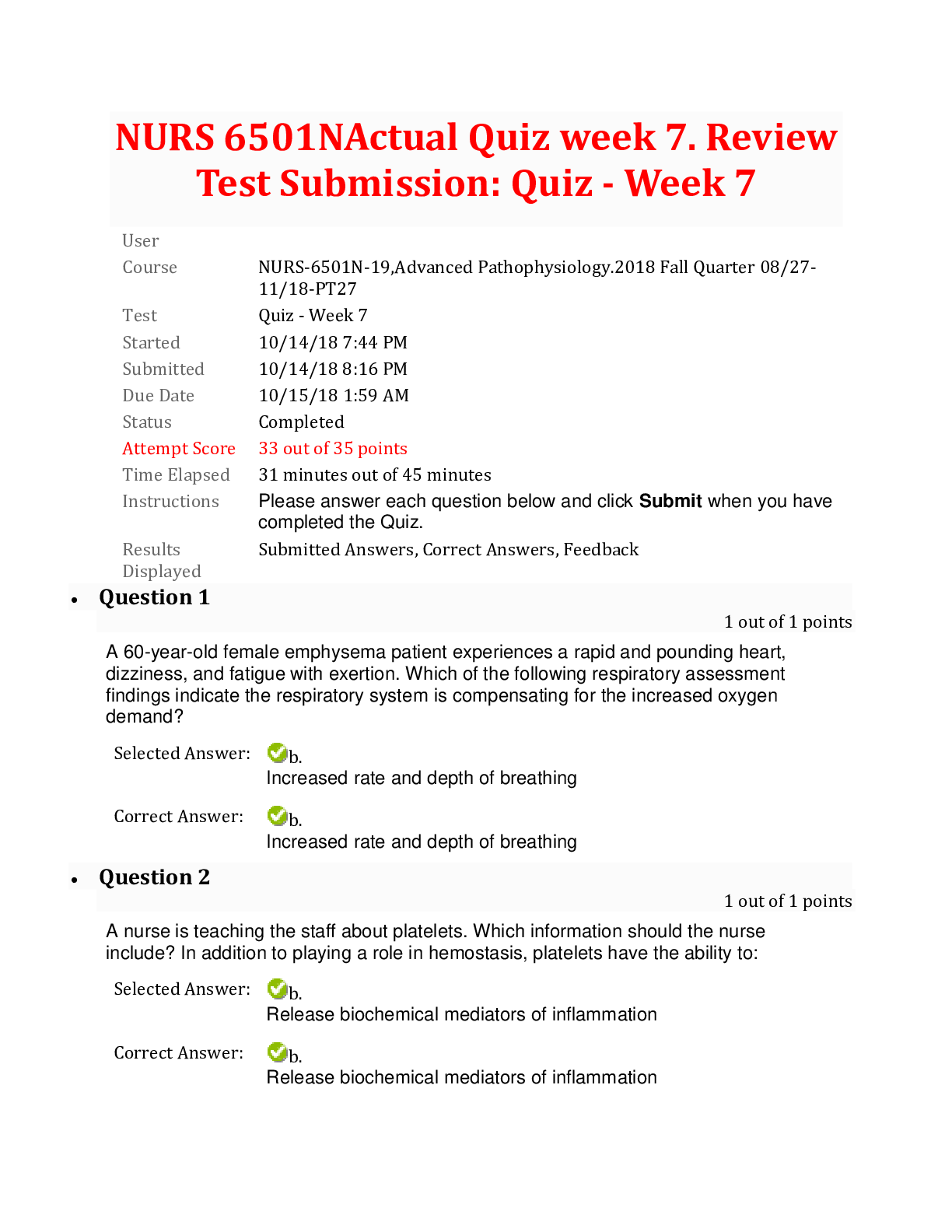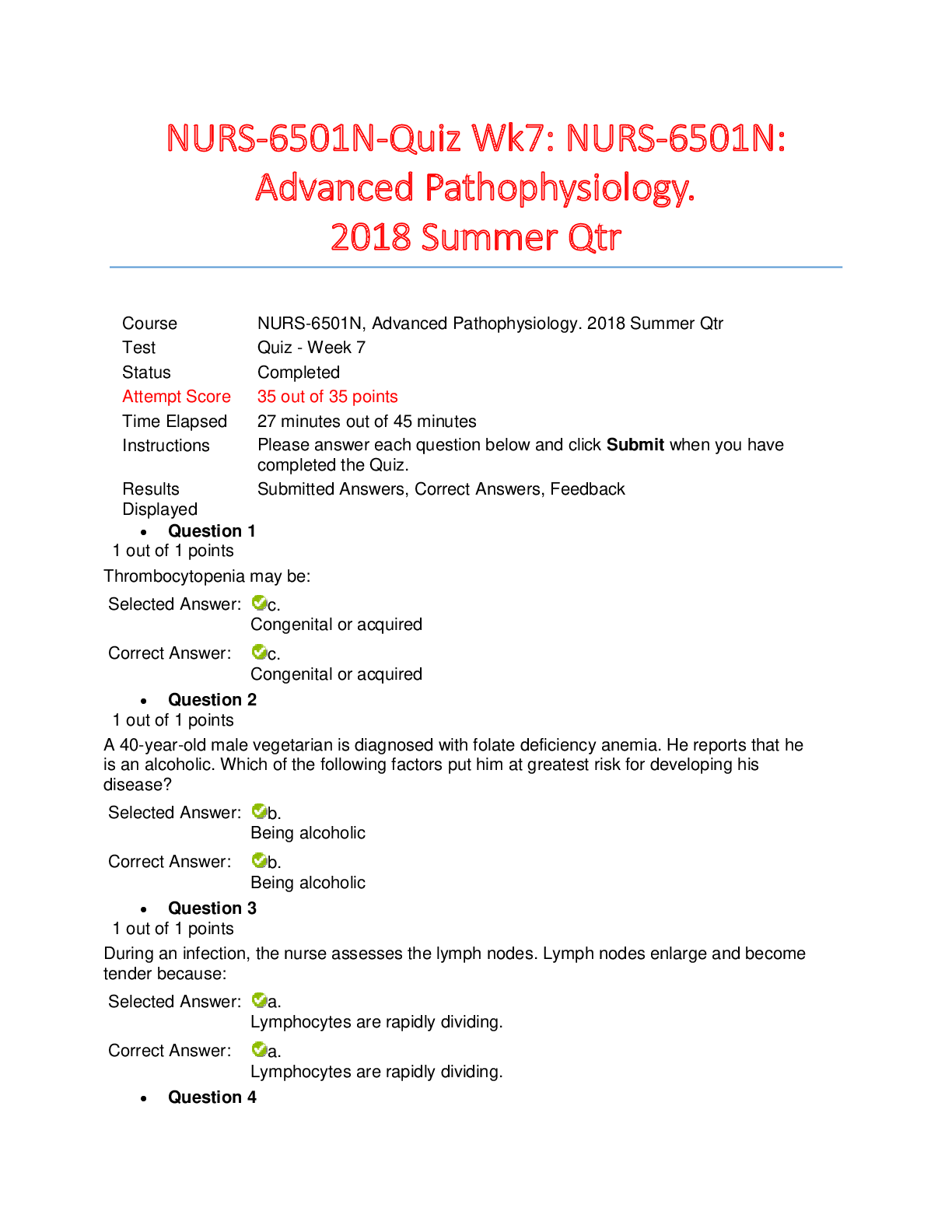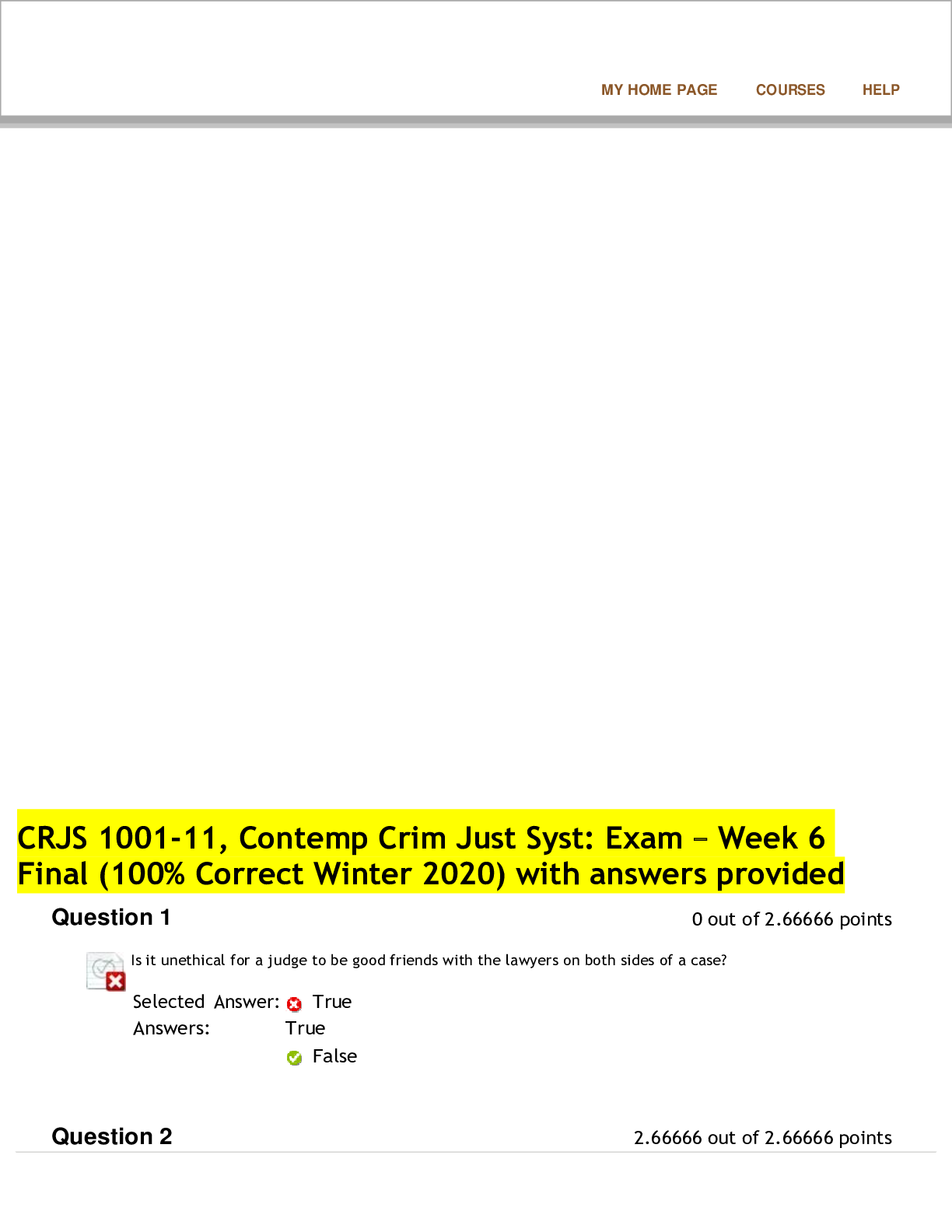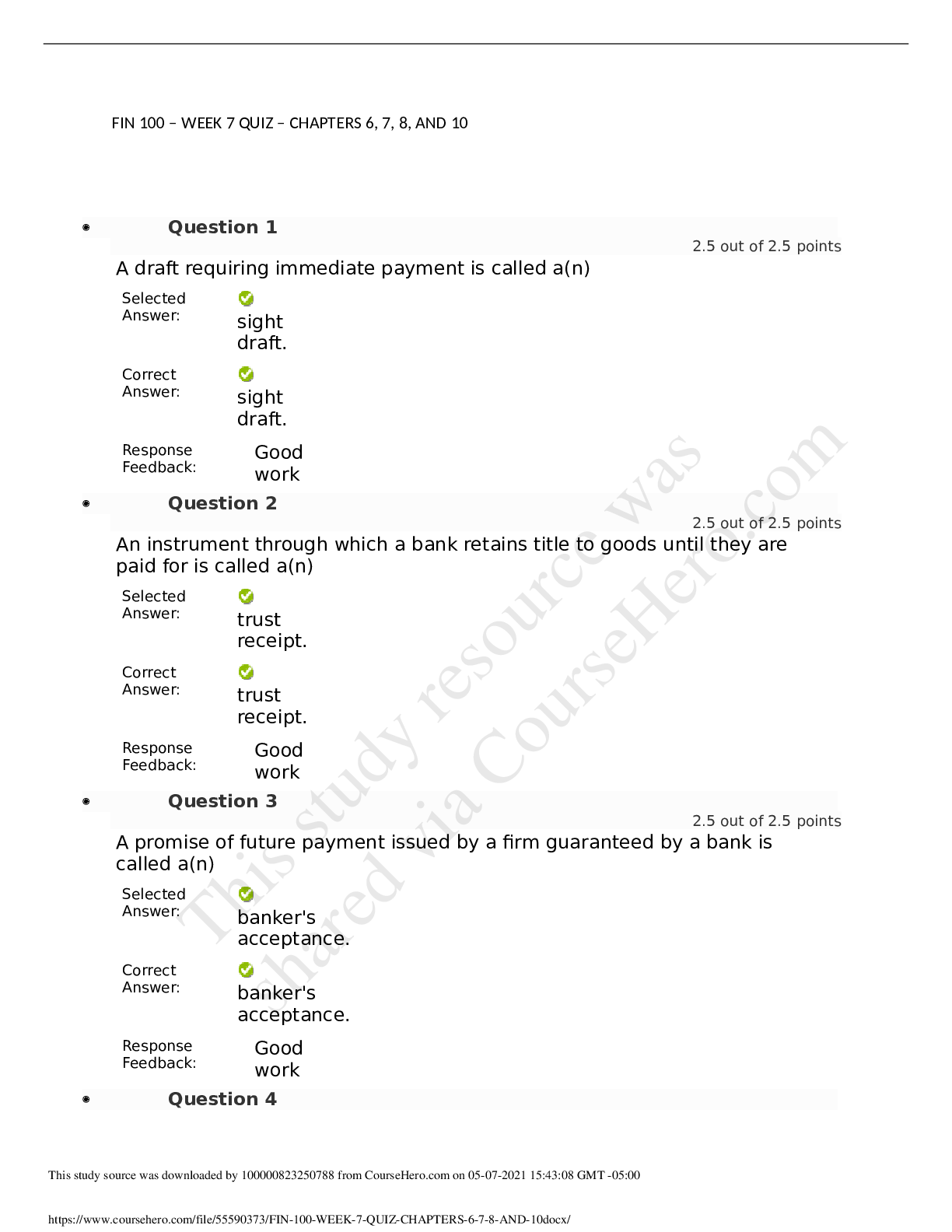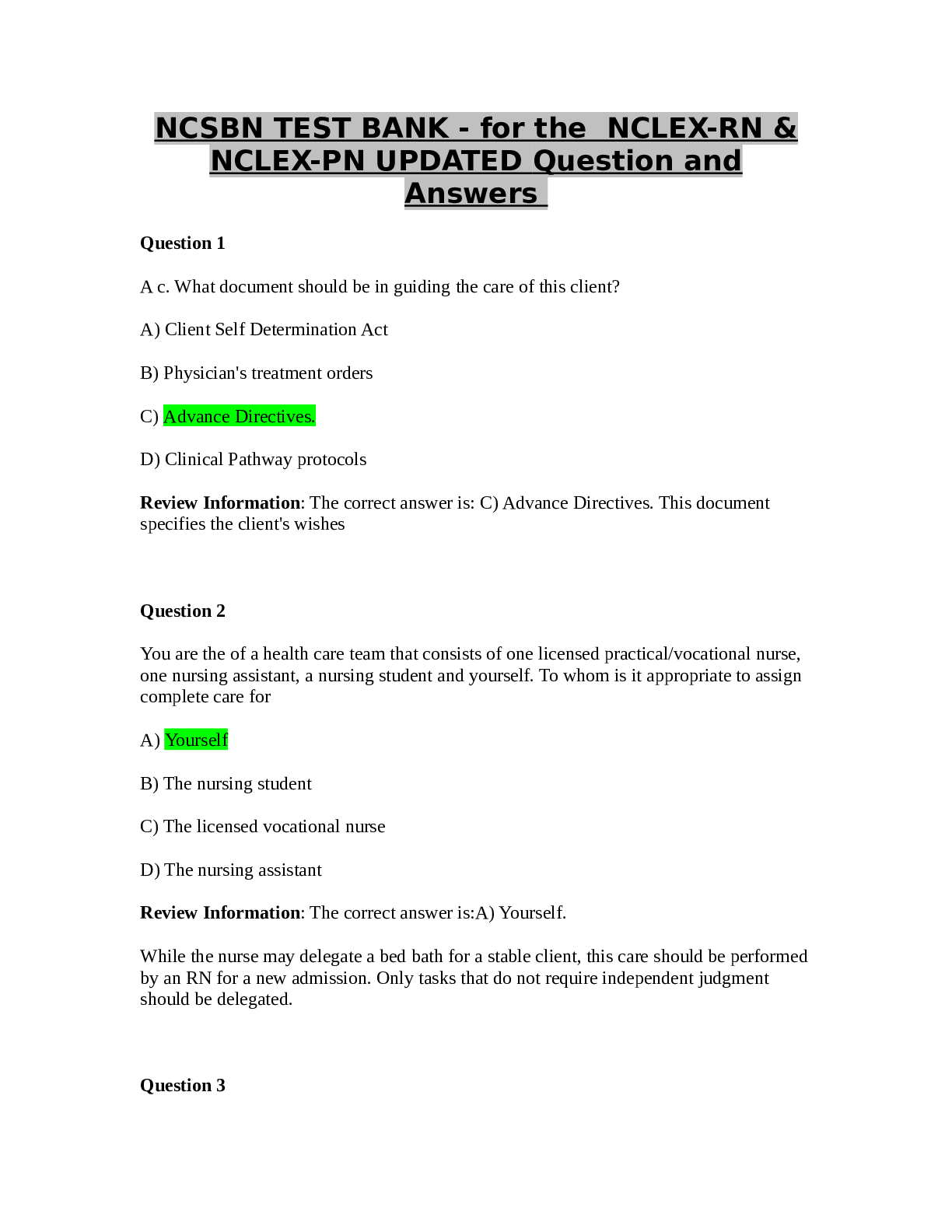*NURSING > QUESTIONS & ANSWERS > NR 511 - WEEK 7 CLINICAL PRACTICE GUIDELINE PRESENTATION,(2019) DYSLIPIDEMIA - Already Graded A+ (All)
NR 511 - WEEK 7 CLINICAL PRACTICE GUIDELINE PRESENTATION,(2019) DYSLIPIDEMIA - Already Graded A+
Document Content and Description Below
I am going to review the clinical practice guideline for the management of dyslipidemia and prevention of cardiovascular disease that was developed by the American Association of Clinical Endocrinolog... ist and the American College of Endocrinology. Dyslipidemia is a broad term that refers to plasma that contains elevated levels of lipids. It is also considered to be the primary risk factor for the development of cardiovascular disease. This clinical practice guideline, or CPG, was developed to assist in screening, risk assessment and treatment of patients with dyslipidemia with the ultimate goal being to reduce the risk of cardiovascular disease and prevention of atherosclerosis. First we are going to review some information starting with the epidemiology. According to the CDC, in 2015 to 2016, 12.4 %, or 31 million adults in the US had a total cholesterol level over 240 mg/dL. This is a reduction from 18% which was present in the year 2000. Overall, this meets the Healthy People 2020 goal for the prevalence of high total cholesterol to be less than 13.5%, however some groups still do not meet this goal. For example, in the 40-59 age group, 17% of men and 17.7% of women have elevated total cholesterol. There is also cultural differences in prevalence with 43.1% of Hispanic men and 41.2% of Hispanic women with having elevated total cholesterol levels. Regarding the incidence of heart disease, it is estimated that every 40 seconds someone in the U.S. has a heart attack, which equates to a reported incidence or 790,000 events per year. Treatment of dyslipidemia, is considered the primary prevention for atherosclerosis. Next we are going to review the pathophysiology. Atherosclerosis is defined as a buildup of cholesterol laden plaque within arteries. The pathophysiology behind atherosclerosis is that it is an inflammatory process that starts with injury to the inner lining of arterial walls due to risk factors such as smoking or hypertension. This inflammation activates cytokines and allows LDL to become deposited in the intimal layer of arteries and produce foam cells which is the basis of atherosclerotic plaques. As the plaque builds up it can cause narrowing of arteries that occludes blood flow. One of the challenges with dyslipidemia is that patients are often asymptomatic until it has progressed to the point where it has caused flow limiting atherosclerosis. At that point, the patient could present with symptoms such as exertional chest pain, lower extremity claudication as is seen in peripheral vascular disease, or TIA’s. Physical assessment findings that may be present are arcus senilis, xanthelasma, or carotid bruits but these findings they may not be present in every patient with dyslipidemia. In fact, most patients with dyslipidemia are asymptomatic and that is why screening has such an important role in the treatment and prevention of both dyslipidemia and cardiovascular disease. This CPG was developed by the board of directors of [Show More]
Last updated: 2 years ago
Preview 1 out of 4 pages

Buy this document to get the full access instantly
Instant Download Access after purchase
Buy NowInstant download
We Accept:

Reviews( 0 )
$10.00
Can't find what you want? Try our AI powered Search
Document information
Connected school, study & course
About the document
Uploaded On
Sep 23, 2021
Number of pages
4
Written in
Additional information
This document has been written for:
Uploaded
Sep 23, 2021
Downloads
0
Views
221

.png)











